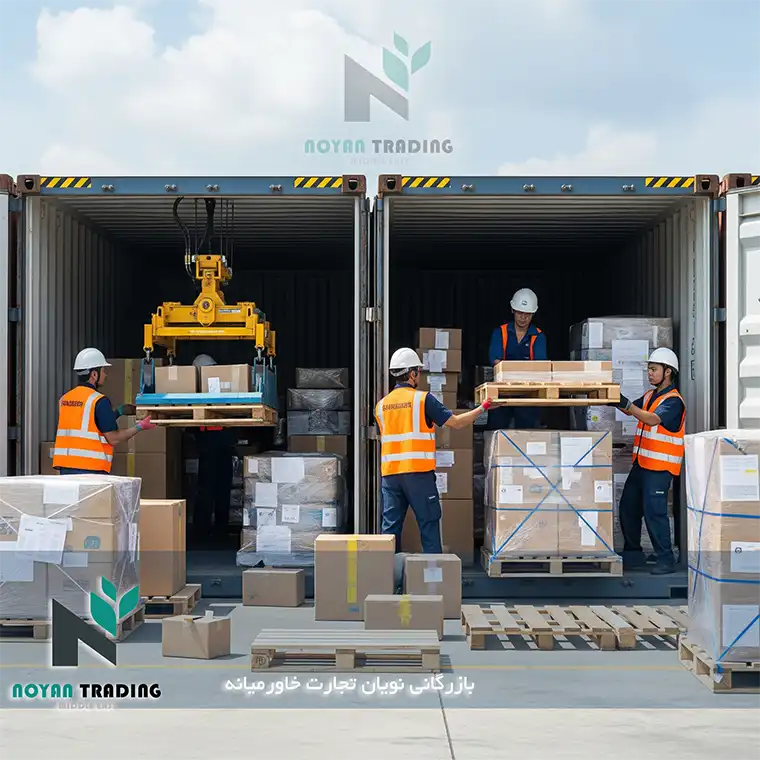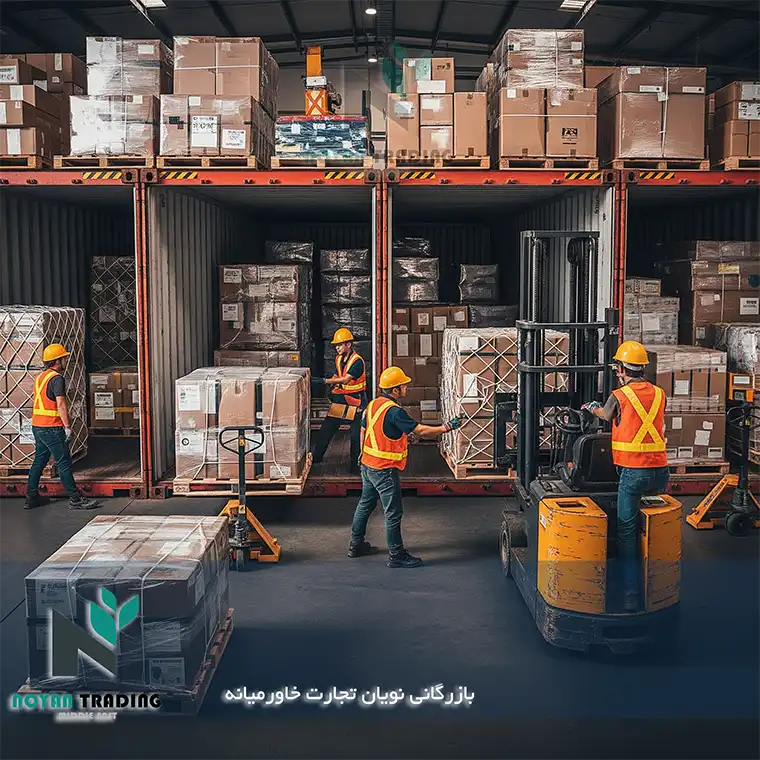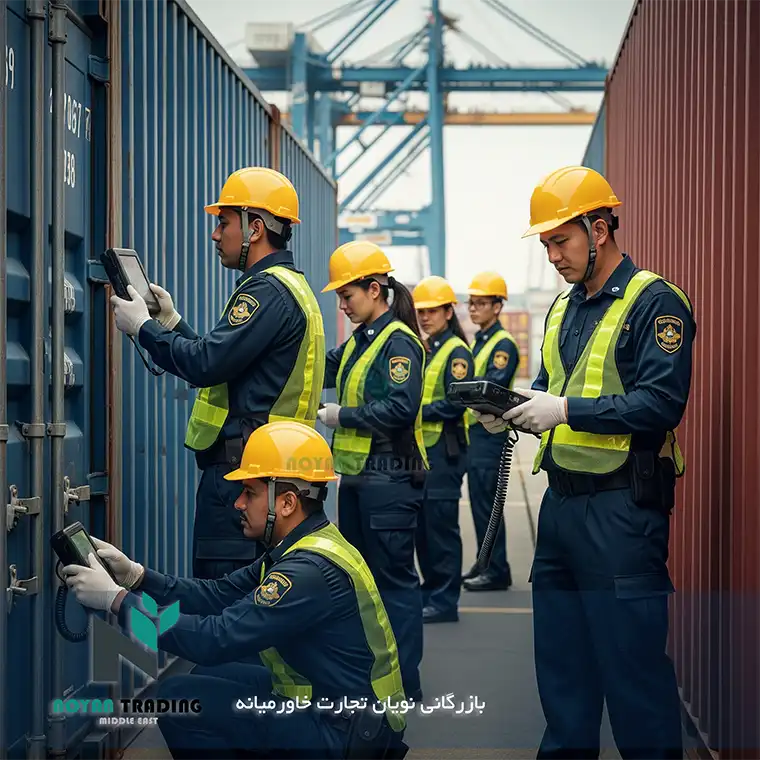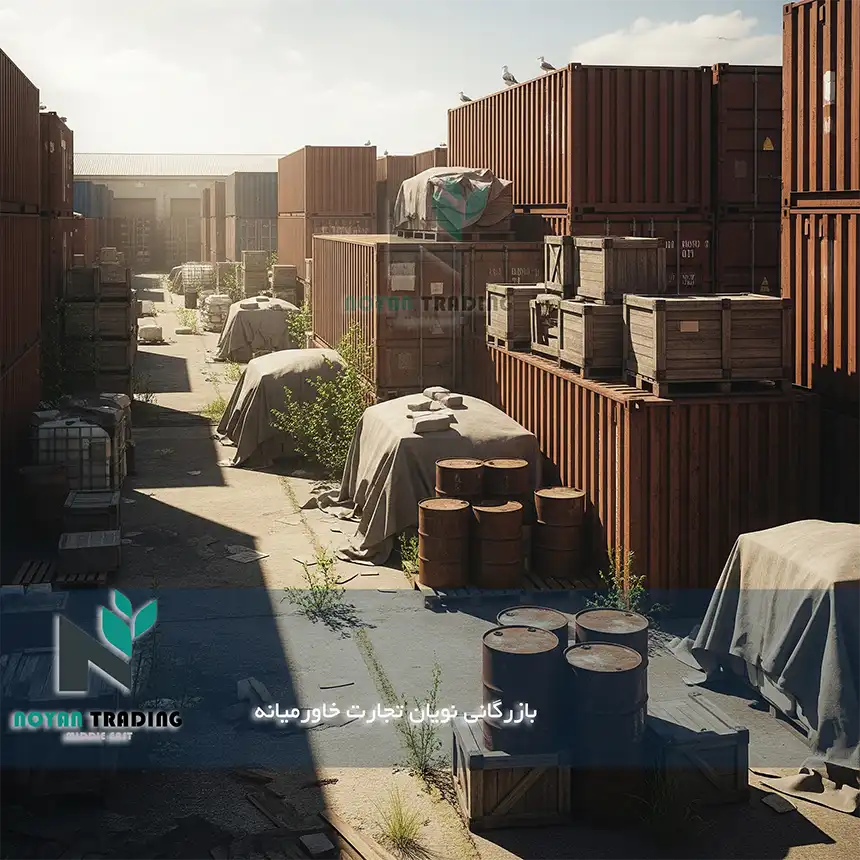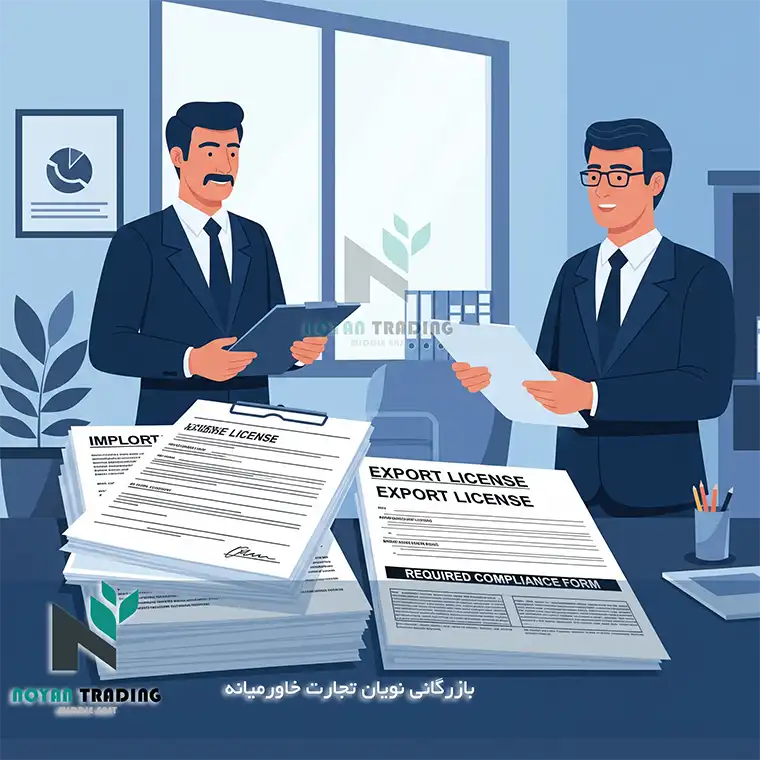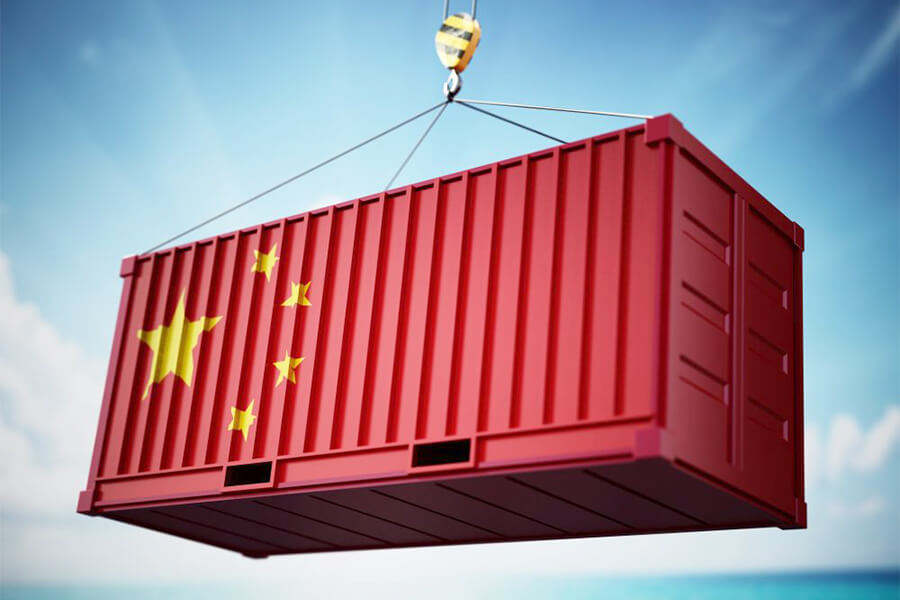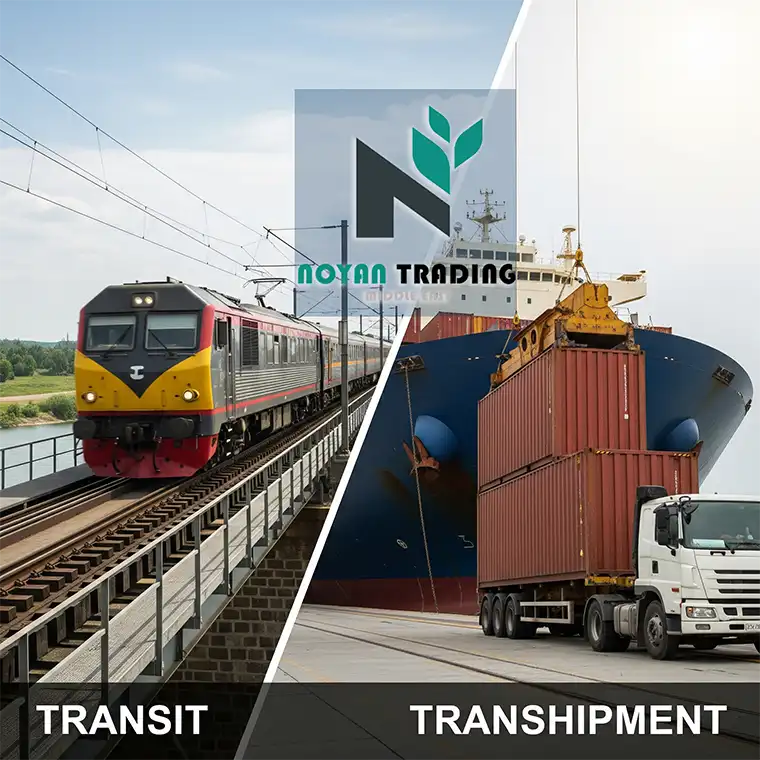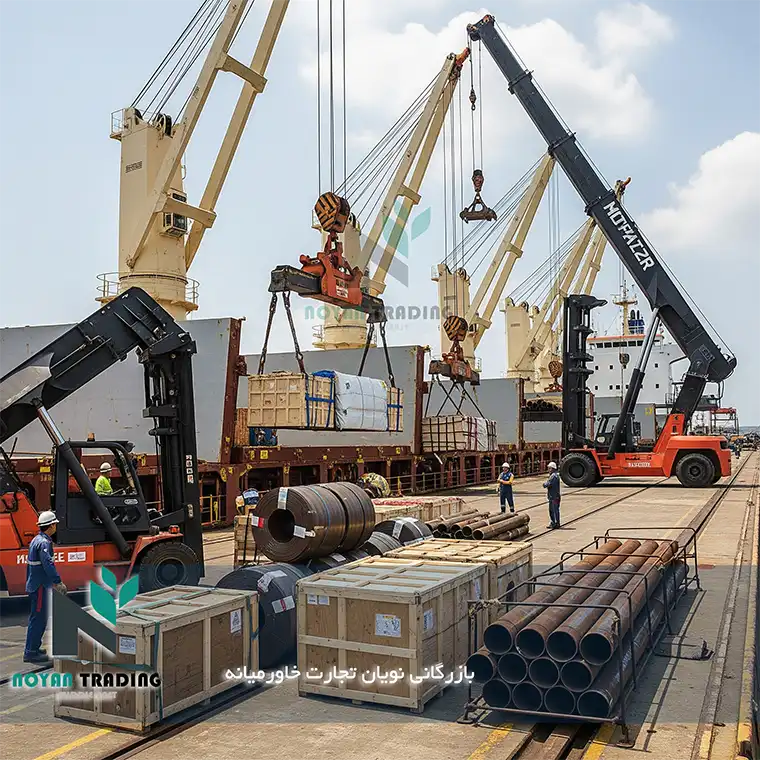Cross Stuffing In the international shipping industry, cross stuffing is the unloading of cargo from one container and reloading it into another. This operation is usually performed at a port or intermediate point (third country) between the origin and the final destination of the goods.
Unlike transshipment, where the entire container is transferred from one ship to another and its contents remain intact, in cross stuffing, the contents of the container are changed. That is, the cargo is removed from the original container and placed in a new container. This operation is usually carried out in a CFS (Container Freight Station) or special warehouses that allow the container to be unloaded and reloaded.

Why is cross-stuffing used?
Cross-stuffing is used for various reasons, the most important of which in the current conditions of international trade, especially for Iran, are:
- Sanctions avoidance: This is the most common reason for cross-stuffing for Iran. Many large shipping lines and transport companies are unable to serve Iranian ports directly due to sanctions. In this situation, the goods are shipped from the origin to a third country (for example, the UAE – Jebel Ali Port, or Turkey). There, the cargo is unloaded from the container of the originating shipping line and transferred to a container of another shipping line that can be shipped to Iran. This changes the origin of the shipper and partially removes the sanctions restrictions.
- No direct shipping line: Sometimes there is no direct shipping line from the port of origin to the port of destination. In this case, cross-stuffing is used at an intermediate port so that the goods reach their destination on two separate shipping lines.
- Port restrictions: In some ports, it is not possible to berth very large ships. Cross-stuffing allows shipping companies to split their cargo from larger ships into smaller containers and ship them to these ports on smaller ships.
- Container space optimization: Sometimes cross-stuffing is used to consolidate small loads from multiple shippers or to split large loads to multiple destinations to make the most of container space.
- Seller/buyer request: In some cases, the seller or buyer insists that the goods be delivered or received in a country other than the original country of origin or destination.
- Technical or operational problems: If a ship is unable to reach its destination for technical reasons or a rerouting is necessary, the cargo can be transferred to another ship through cross-stuffing.
Benefits of cross-stuffing:
- Overcoming sanctions restrictions: The main advantage for countries like Iran.
- Increasing flexibility in transportation: The ability to use different routes and diverse shipping lines.
- Access to new markets: Providing the possibility of exporting and importing to countries that are not normally directly accessible.
- Reducing long-term warehousing costs: Goods can be quickly It is moved between containers and does not require long storage in the intermediate port warehouse.
- Optimum use of container capacity: Consolidation or separation of loads to optimally fill containers.
Disadvantages and challenges of cross-stuffing:
- Increased cost: Cross-stuffing involves the cost of unloading, reloading, and operating costs at the intermediate port, which can increase the final price of the goods. On average, the cost of cross-stuffing is about $300-400 for each 20-foot container and about $500-600 for each 40-foot container.
- Increased risk of damage to goods: Each time the goods are unloaded and reloaded, the possibility of damage to the goods increases. This process requires precision and proper equipment.
- Increased transportation time: Although cross-stuffing operations are fast (about 1-2 days), they increase the overall transportation time compared to the direct route.
- Document complexity: The need to issue a new bill of lading at Wasit Port and greater coordination between shipping companies and customs.
- Insurance issues>: If cross-stuffing is performed, this operation must be stated in the cargo insurance policy, otherwise the insurance company may refuse to pay compensation in the event of an accident.
Cross-stuffing in Iran:
Cross-stuffing is a It has become a common and vital method in exports and imports. Many goods that cannot be imported directly into Iran (for example, electronics, household appliances, some food and cosmetics) enter the country through cross-stuffing in third countries (such as the UAE – Jebel Ali Port, or Turkey). Iranian ships also transfer their cargoes to ships with the flags of other countries in a port in a third country for export so that they can reach their intended destinations.
Iranian customs regulations specifically have technical and operational details for cross-stuffing operations that shipping companies and customs brokers are familiar with. This process must be carried out under close supervision and in compliance with customs laws in the Wasit country and Iran to avoid legal problems.
Cross Stuffing: A Deeper Look at a Critical Operation in International Logistics
Cross stuffing, beyond a simple transfer, is a complex and strategic logistics operation in which the contents of a container (cargo) are removed from their original origin and transferred to another container so that the transportation route continues to the final destination. This process is usually carried out at a hub port and often involves changing the bill of lading.
Cross-Stuffing:
To better understand cross-stuffing, it is necessary to distinguish it from similar terms that are sometimes confused with it:
- Transshipment: In transshipment, the whole container is transferred from one ship to another, without the contents of the container being unloaded or reloaded. The main purpose of transshipment is to change the route or means of transport to reach the final destination. Here, the container remains intact.
- Example: A container from Shanghai arrives at Jebel Ali Port on ship A and then the same container goes to Dammam Port on ship B.
- Transit: In transit, goods pass from one point of entry to an exit point in a third country (without change of ownership and without payment of customs duties and taxes). The goods may not be unloaded or even their container opened on this route.
- Example: A good from Turkey bound for Afghanistan passes through Iranian territory.
- Domestic Transit: The transfer of goods from one customs office of entry to another customs office in the same country for clearance procedures.
- Example: A container is unloaded in Bandar Abbas and transferred to Tehran Customs for final clearance.
Cross-stuffing, unlike the above, necessarily involves opening the container and physically moving the cargo.
Cross-stuffing operational details:
Cross-stuffing operations are carried out at Container Terminals or Container Freight Stations (CFS). The general steps are as follows:
- Incoming container of origin: The container carrying the cargo from the country of origin arrives at the port of Wasit (e.g. Jebel Ali, Mersin, or any other Hub port).
- Unloading container: The container is unloaded and its cargo is temporarily placed in CFS warehouses or cargo storage areas. At this stage, the cargo is inspected for quantity, weight, and apparent health.
- Inspection and preparation of new container: The new container in which the cargo is to be loaded is inspected for health, cleanliness, and standardization (for carrying the desired goods).
- Stuffing: The cargo is transferred from the temporary storage area to the new container and carefully loaded. This stage is very sensitive and must be carried out in compliance with safety principles and packaging standards to prevent damage to the goods.
- Sealing and issuing new documents: The new container is sealed and a new House Bill of Lading is issued with the new container information and the remaining route. In some cases, a new certificate of origin may also be required (for example, with the intermediate country as the new origin), although this is less common and depends on the regulations of the destination.
- Shipping to final destination: The new container is shipped using a different shipping linethat can be transported to the final destination, is sent to the destination.
Deeper reasons for using cross-stuffing (especially for Iran):
- Manage sanctions and political risks:
- Reduce the sanctions footprint: By changing the container and issuing a new bill of lading in a third country, the chain of ownership and direct transportation from the sanctioned origin is broken. This allows shipping lines, banks and international insurance companies that do not want to take direct risks with sanctioned parties to participate in the continuation of the cargo transportation process.
- Maintaining trade relations: For countries like Iran that are facing international sanctions, cross-stuffing is the only way to continue importing vital goods (including raw materials, medicines, medical equipment, spare parts) and exporting non-oil products.
- Preventing goods from being seized: In some cases, without cross-stuffing, goods may be seized en route by countries that strictly enforce sanctions.
- International logistics networks:
- Global hub ports: Ports Large ones like Jebel Ali (UAE), Mersin (Turkey), Colombo (Sri Lanka), or Singapore act as “hub ports” that allow connections between hundreds of shipping lines and different destinations. Cross-stuffing is an integral part of the operations of these hubs.
- Optimizing ship capacity: By sending their cargo to these hubs and performing cross-stuffing, shipping lines can operate their large ships at full capacity on the main lines and use smaller ships (Feeder Vessels) for secondary and connecting routes to final destinations.
- Cargo division (Consolidation/De-consolidation):
- Consolidation: The collection of small loads (LCL – Less than Container Load) from multiple shippers into a large container at a CFS for shipment to a single destination.
- De-consolidation: The separation of a large container load that contains small loads for multiple receivers, at the destination or an intermediate point. Cross-Staffing can be part of this process.
Challenges and more detailed considerations:
- Hidden costs and increased cost price:
- Operating costs in CFS (unloading, loading, temporary storage).
- New administrative and documentation costs.
- Two-stage transportation costs.
- Increased profits Intermediate companies.
- Note for Iranian importers/exporters: These costs directly affect the final price of the goods and are ultimately paid by the end consumer, which can fuel import inflation.
- Operational and security risks:
- Physical damage to goods: With each unloading and reloading, the likelihood of falling, breaking, crushing, or other physical damage to the goods increases.
- Theft or loss: Increasing the points of contact with the goods increases the risk of theft or loss of part of the shipment.
- Contamination or mixing: If health protocols are not followed, there is a possibility of cross-contamination between loads.
- Needs close supervision and inspection: The owners of the goods or their representatives must closely supervise the cross-stuffing operation.
- Legal and insurance complexities:
- Second bill of lading (House Bill of Lading): In cross-stuffing, a “Master Bill of Lading” is often issued by the main shipping line and a “House Bill of Lading” is issued by the forwarder (intermediary shipping company), indicating changes in the cargo. This can create legal complications if a problem arises.
- Insurance Coverage: It is vital that when insuring cargo, the cross-stuffing operation and its location are clearly stated in the cargo insurance policy. Otherwise, the insurance company may refuse to pay compensation if damage occurs during container handling operations. Check this insurance clause carefully.
- Delay in delivery time:
- Even if cross-stuffing is done quickly (usually 1-2 days), the waiting time to connect to the next vessel, as well as customs clearance times at Wasit Port, can add to the overall shipping time.
Cross-stuffing, while an efficient solution to overcome geopolitical and logistical constraints, requires careful planning, selection of reliable logistics partners, and comprehensive insurance coverage to mitigate the risk.The associated costs are minimized. For Iranian businessmen, a deep understanding of this process is an important competitive advantage.

